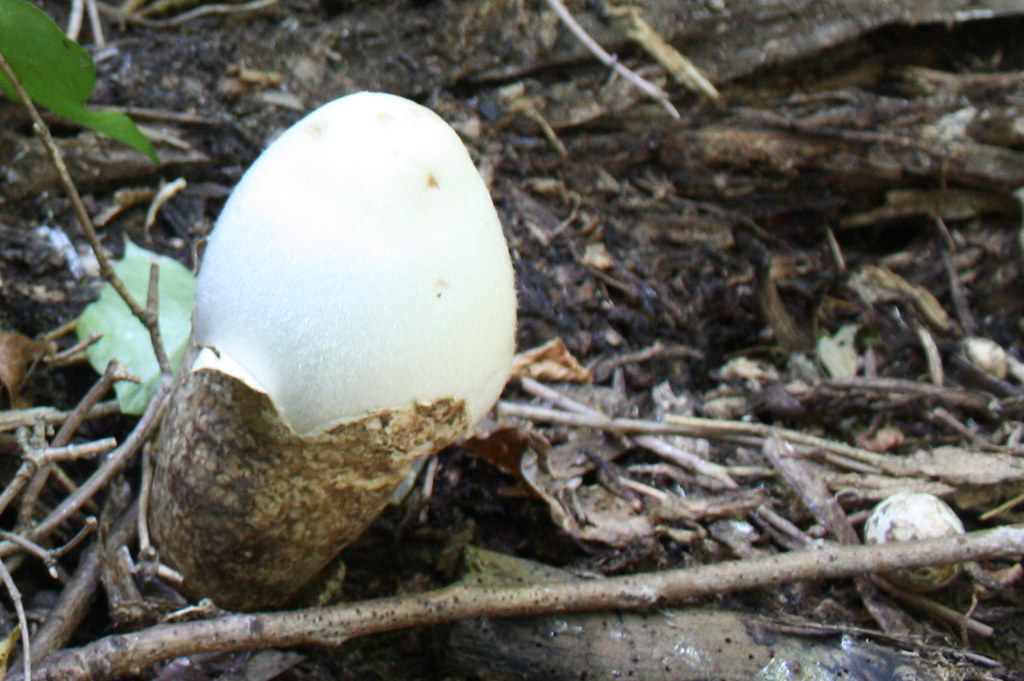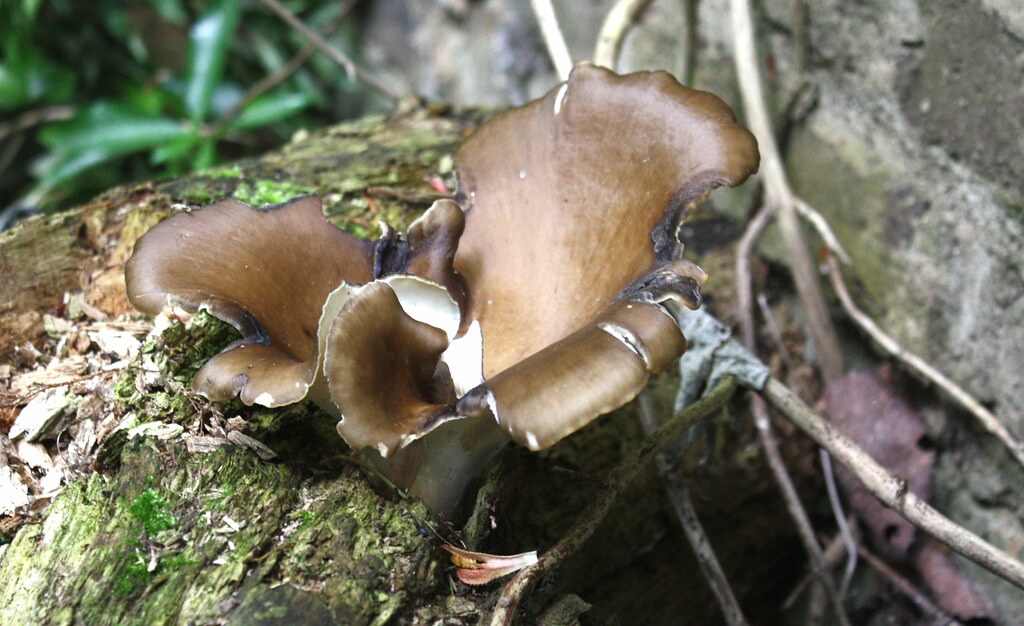There have been a lot of articles written about fungus foraging, what damage it does etc. I am going to add my ideas with regard to the situation in Abney Park.
Fungal fruiting bodies (FBD) are the equivalent to a flower, and they sit on and are produced by hyphae. The hyphae are the main body of the fungus. Have you ever kicked over damp leaves and seen a white fibrous matter linking the lower leaves? That is hyphae. Occasionally it is thick enough to be visible as in the ‘bootlaces’ of honey fungus, renowned for the black mesh that is seen under the bark when a tree has died. Removing the flower from a plant can stimulate more flower production without really damaging the plant. Removing the FBDs from the hyphae might also stimulate the production of more FBD, it might exhaust the whole fungus but it is probably going to be less damaging than the compression of the soil around the FBDs which can damage the fine threads of the hyphae.

Bootlaces of Armillaria, 1.2.2013
The impact on the soil in Abney is minimal as most walking is directed along paths and the off path traffic is limited by the graves.
What could be more annoying is the effect on the nature reserve of removing or prematurely knocking over clusters of caps. Agaricus and Chlorophyllum are the prime species involved here. Each year I find clusters of caps picked and discarded. They have not been kicked over but are free of the ground and on their sides around where they have been picked. Agaricus is a group of species that includes edible types, but in Abney they are probably not. They conform to the “if I can peel it and it has a white cap it is safe to eat” that has been quoted at me occasionally, but it doesn’t work. Most Agaricus caps in Abney are yellow stainers which the books will tell you cause projectile vomiting etc. The best way to tell is by picking a fresh cap and bruising the base… and watching it go bright yellow. If a cap from one cluster goes yellow the chances are that all the caps in the immediate area will do the same. So why pick a whole group? If you see anyone doing this would you ask them for me? At least they still produced spores when they are maturing in the place where they grew.
What is more interesting to me is the invertebrates that are associated with the caps. I have spent a lot of time recently looking at the little creatures associated with them. Yesterday I looked at an exuberant flowering of Glistening Ink Cap, one of the more common ink caps in Abney. There were 2 flying insects living around the caps. There was a Fungus Gnat, and I am going to quote Wickipedia here….
Fungus gnats are small, dark, short-lived flies, of the families Sciaridae, Diadocidiidae, Ditomyiidae, Keroplatidae, Bolitophilidae, and Mycetophilidae (order Diptera); they are sometimes placed in the superfamily Mycetophiloidea. The larvae of fungus gnats feed on plant roots and fungi, which aids in the decomposition of organic matter. The adults are 2–5 mm long and are important pollinators that can help spread mushroom spores as well as plant pollen.

Coprinellus micaceus, Glistening Ink Cap 27.10.2013 with fungus gnat
And then there was a more substantial fly that I have yet to get even close to identifying.

Coprinellus micaceus, Glistening Ink Cap 27.10.2013 with fly
A small spider was living under the rim of one of the caps and making a very fine living from darting out and grabbing the odd gnat. I’ve seen a robin and a wren feeding on these flies.
When I look at slides taken from FBD to try to identify them I continually coma across microscopic animals. Apart from the maggots there are even smaller foraging creatures I have no idea about. There are a couple of examples here but they are the tip of the iceberg…

Invertebrates feeding in cap 20.10.2013 (1)

Invertebrate feeding in cap (2)
If the fungus caps are removed or prematurely shattered (stamping) or dried (picking and leaving on the ground) it is taking out a section of the network of interrelations that are important in a nature reserve.
Read Full Post »

































